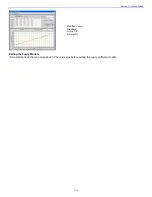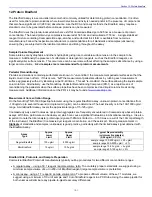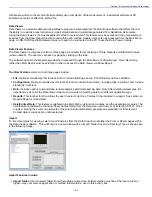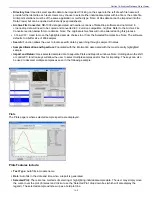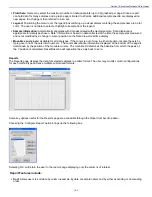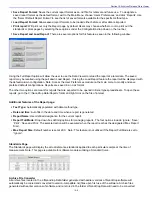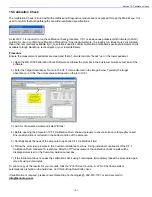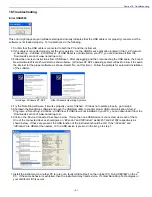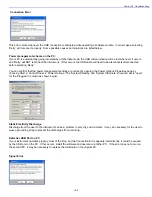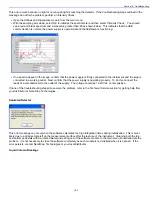
Section 12- Protein Bradford
In addition to the kit reagents, protein standards (e.g., BSA) for generating a standard curve are provided by the
manufacturer. Follow the manufacturer’s recommendation using standard (BSA) dilutions that cover the analytical (ug/ml)
range of interest. Note: Since the ND-1000 Spectrophotometer can measure higher protein concentrations, you may need
to supply your own protein standards at higher concentrations than provided by the manufacturer.
Unique Screen Features
View Standard Curve (F8):
selecting this button allows the user to view the standard curve at any time.
Sample Type:
choices are Reference, Standards 1-7, and Sample. The software will guide you to measure your
reference, then at least one standard before allowing measurement of samples. Reference samples refer to the dye
reagent without any protein added (ie the “0” sample).
Replicate #:
counter for tracking replicate number during reference and standard measurement.
Reset all Standards (F11):
clears all replicates of all standards.
Reset 1 Standard (F12):
clears all replicates of the selected standard.
Absorbance at 595 nm:
the protein-dye complex’s absorbance at 595 nm for the 1mm pathlength.
Cursor
λ
and Absorbance:
this feature allows the user to adjust the cursor wavelength and view the corresponding
absorbance. The cursor wavelength can be set by the user. Note: The user-selected wavelength and absorbance are not
utilized in any calculations.
ug/ml:
concentration of the sample (unknown).
Making Bradford Protein Measurements
A standard curve is required every time the Bradford assay is run. Although curves can be saved and reloaded in the
NanoDrop
®
ND-1000 Spectrophotometer software, it is recommended that the user follow manufacturers’ guidelines and
generate fresh standard curves for each assay. Additionally, a standard curve ‘set-up’ may be reloaded. This feature will
recall the respective standard series used in a previously saved standard curve. Both single and multi-point standard
curve generation is incorporated into the software. A standard curve can be developed using a reference (Modified
Bradford reagent only – no protein) and a single replicate of one standard. The multi-point standard curve generator
allows a maximum of five replicates for each of seven different standards. There is no set order in which standards must
be run.
A blank must be measured before the standard curve may be generated. It is advisable to use water as the blank and use
the dye reagent without any protein added as the “0” or reference sample. There are three general procedural steps to
unknown protein concentration measurements. The requisite order, including generating the standard curve, is as follows:
Step 1:
Measure the
‘Reference’
(Bradford reagent –
a ‘zero’ Standard)
Note: The software
will guide the user
with instructions in
the large text box on
the right side of the
screen.
12-2













